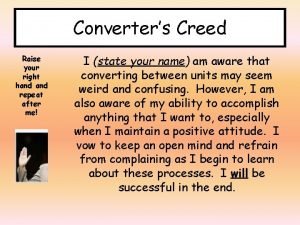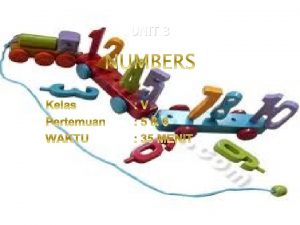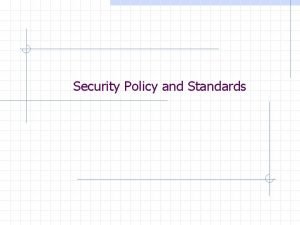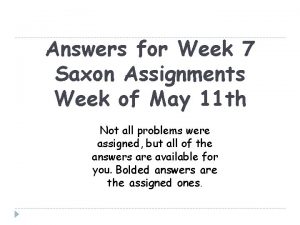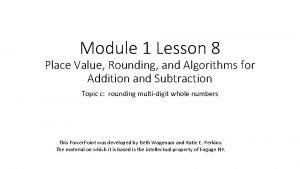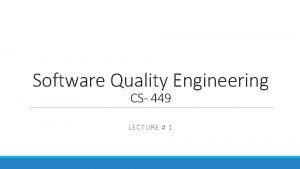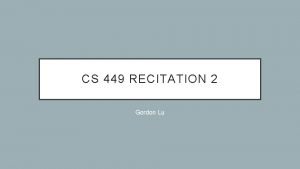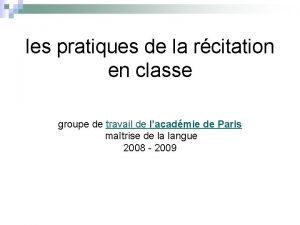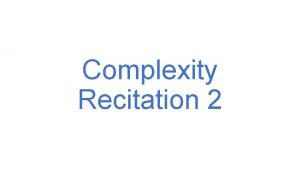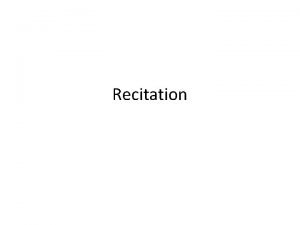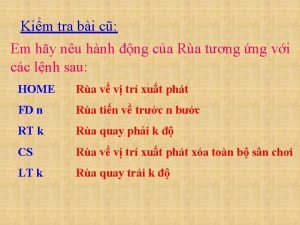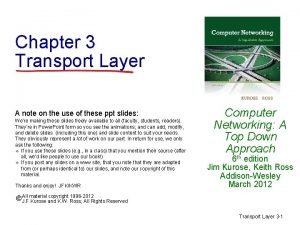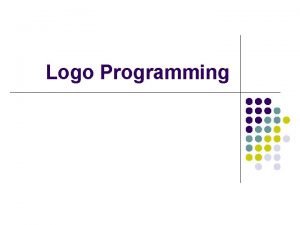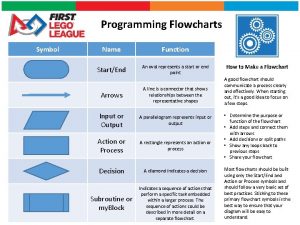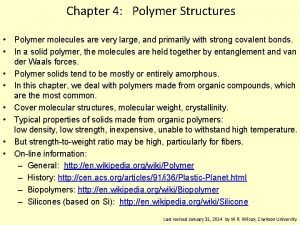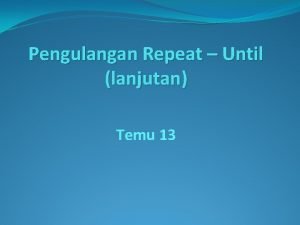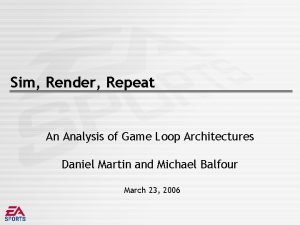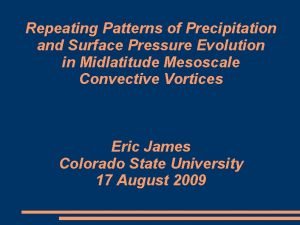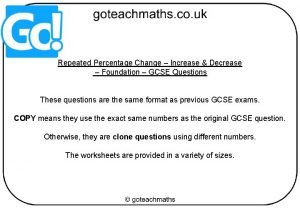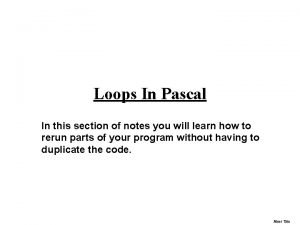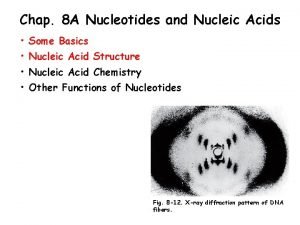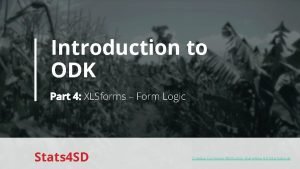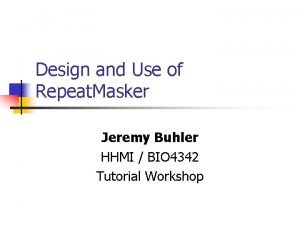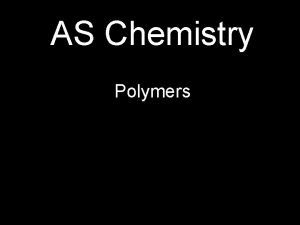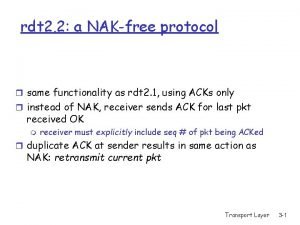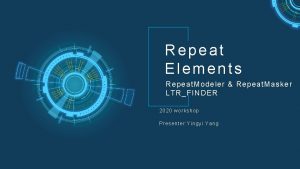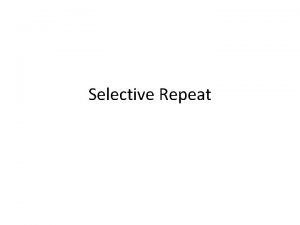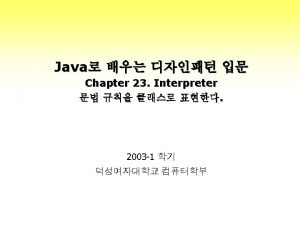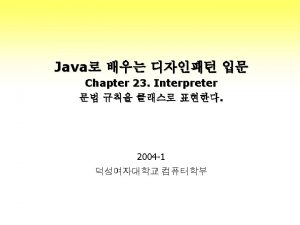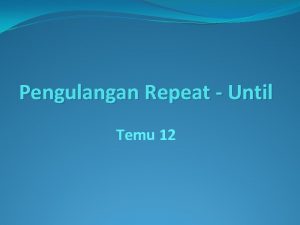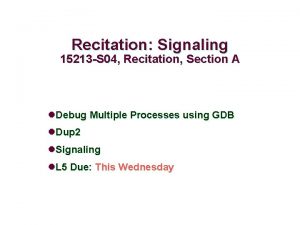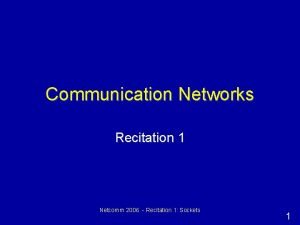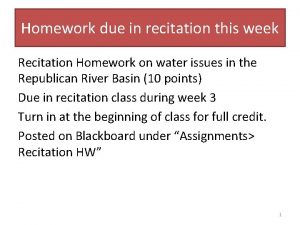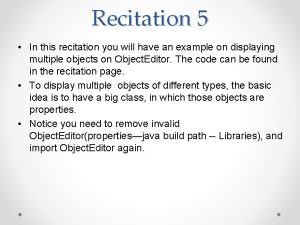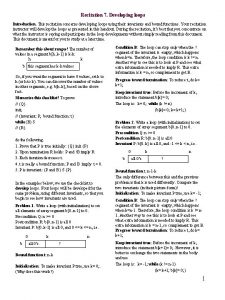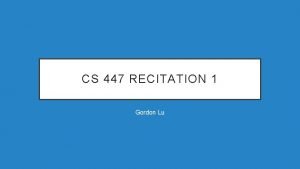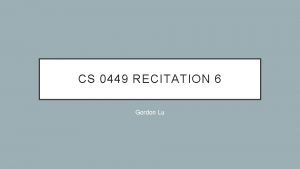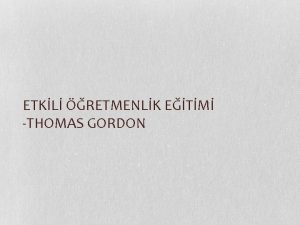CS 449 RECITATION 2 Gordon Lu REPEAT AFTER






















![THE ARRAY INDEXING OPERATOR • p[n] means “access the nth item pointed to by THE ARRAY INDEXING OPERATOR • p[n] means “access the nth item pointed to by](https://slidetodoc.com/presentation_image_h/3064c7528e41ad8ff099cdc2cf3b8019/image-23.jpg)
![WHAT THE BRACKETS ACTUALLY DO p[n] in C really means “dereference address p + WHAT THE BRACKETS ACTUALLY DO p[n] in C really means “dereference address p +](https://slidetodoc.com/presentation_image_h/3064c7528e41ad8ff099cdc2cf3b8019/image-24.jpg)







![STRING MANIPULATION EXAMPLE Suppose we start out with a char array mystr: char mystr[100]; STRING MANIPULATION EXAMPLE Suppose we start out with a char array mystr: char mystr[100];](https://slidetodoc.com/presentation_image_h/3064c7528e41ad8ff099cdc2cf3b8019/image-32.jpg)















- Slides: 47

CS 449 RECITATION 2 Gordon Lu

REPEAT AFTER ME Repeat after me: • Arrays aren’t real in C! • Never invoke sizeof() on a pointer! • Never do heavy string manipulation in C!

MEMORY

MEMORY • Before we talk about what pointers are… it’s helpful to understand memory a little more! • Memory is …. a huge one-dimensional array of bytes • Every byte has an associated address • That address is its array index • For values bigger than a byte, we scale up, and use consecutive bytes! • But… regardless of size, the address of any value is the address of the first byte!

THE SIZEOF() FUNCTION • sizeof() is a compile-time operation which tells you how many bytes something takes up! EXTREMELY IMPORTANT: • C does not know how big an array of a pointer is!! • All pointers in C will be 8 bytes. • Repeat after me: NEVER INVOKE SIZEOF ON A POINTER ANOTHER THING: • sizeof(array) GIVES YOU THE BYTE SIZE!!

POINTERS: AN ANALOGY

LOCKERS 1) Let’s think about lockers… what’s its purpose? • … to store things… 2) How do we identify lockers from one another? • Using their locker numbers… 3) How do you access a locker? • By knowing the locker number and combination…. • For our purposes, let’s assume the lockers are combo-less 4) If I wanted to give someone else access to my locker, what would I do? • RIP IT OUT AND HAND IT TO THEM! • Hehe… ya just give them the locker number!

LOCKER ROOMS Just like a locker stores things • A variable stores things… • But a variable is a thing itself… Each variable is just like a locker! • It has a number: its address • It stores something: its value • It belongs to someone: its owner How would I give someone else access to my variable? • Give’m the locker number… • Which is… the memory address! • So what’s a variable? • It’s just a way to conveniently refer to their memory address!

POINTERS!!! • A pointer is a variable which holds another variable’s memory address. • Once you have a pointer, you have access to two things: 1) The pointer itself 2) The variable it points to

POINTERS

WHAT IS A POINTER? • A pointer is a variable that holds a memory address of another variable. • Essentially, anytime you would use an array in Java, you’d use a pointer in C. • You can access a value a pointer points to using the dereference operator (*). • C uses pointers because it’s easier to say, “that’s the place that has that data” rather than saying “This is the entire thing that which includes the data I’m interested in!”

ANOTHER THING… ARRAYS DON’T EXIST IN C! • Wait… what? ? ? • You heard me… ARRAYS DON’T EXIST IN C • Basically, arrays are considered as local variables in C. • Meaning, we can’t return an array in C! • So, what do we do instead? • We return a pointer to the array instead! • BIG POINT: Arrays become pointers when passed into functions!

ADDRESS-OF (&) OPERATOR • You can get the address of a variable via the address-of operator (&) int x; int* p = &x;

POINTERS EXAMPLE int x = 10; int y = 20; int* p = &x; We say “p points to x” x 10 y 20 p address of x

POINTERS EXAMPLE p = &y; int** pp = &p; x 10 y 20 p address of x address of y pp address of p

POINTERS AND ARRAYS

POINTERS AND ARRAYS • A pointer can point to one or more values. • A char* may point to a single char, or to an array of chars.

ARRAYS EXAMPLE char c = ‘x’; char* s = &c; c ‘x’ s address of c string literal s = “hi!”; ‘h’ ‘i' ‘!’ ‘�’ “Pointing to a single value” is the same as “pointing to an array of length 1”!

ACCESSING THE VALUE AT A POINTER

THE VALUE-AT (DEREFERENCE) OPERATOR 1) * is the value-at operator: it’s the inverse of & • Every time you use it, you remove a star. 2) It accesses the variable that a pointer points to • We say that it “dereferences” a pointer

POINTER EXAMPLE int x = 10; int* p = &x; x 10 15 p address of x *p = 15; //changes x! Changing the value of a pointer (via dereference) will change the original value!

ARRAY-INDEXING OPERATORS
![THE ARRAY INDEXING OPERATOR pn means access the nth item pointed to by THE ARRAY INDEXING OPERATOR • p[n] means “access the nth item pointed to by](https://slidetodoc.com/presentation_image_h/3064c7528e41ad8ff099cdc2cf3b8019/image-23.jpg)
THE ARRAY INDEXING OPERATOR • p[n] means “access the nth item pointed to by p. ” char* s = “hi!”; char c = s[2]; s address of string literal char d = 2[s]; Now c and d are the same thing… ‘h’ ‘i' ‘!’ ‘�’
![WHAT THE BRACKETS ACTUALLY DO pn in C really means dereference address p WHAT THE BRACKETS ACTUALLY DO p[n] in C really means “dereference address p +](https://slidetodoc.com/presentation_image_h/3064c7528e41ad8ff099cdc2cf3b8019/image-24.jpg)
WHAT THE BRACKETS ACTUALLY DO p[n] in C really means “dereference address p + n” s[2] = *(s+2) = *(2+s) = 2[s] What about values bigger than a char?

SCALING •

POINTER ARITHMETIC & VOID POINTERS

MEMORY ADDRESSES ARE JUST NUMBERS 1) Pointers hold memory addresses… • Memory addresses are just numbers. 2) It’s incredibly useful to do arithmetic on memory addresses • No dereferencing is involved in pointer arithmetic. • We are operating on the pointer itself!

STRINGS IN C

STRINGS ARE JUST CHAR ARRAYS • Strings are just sequences of characters! • In C, we indicate the end of a String using a NULL TERMINATOR: ‘�’ • If we lose track of the NULL TERMINATOR, we’re pretty much screwed.

STRINGS IN C • The end of a string is indicated by a NUL Terminator (‘�’) • There are two ways to initialize strings in C, by a char array, or a char pointer 1) char mystr[100] = “hello”; Allocates space for 100 characters, fills array with characters up to the length of the string, and fills the rest of the slots with ‘�’! 2) char* mystr = “hello”; Allocates the string in the static data segment - Allocates space for the pointer - Don’t do this if you want to do String Manipulation!

BASIC STRING FUNCTIONS • strlen(): Scans entire string for a ‘�’ and return count of iterations to get there • strcmp(): compares two string and returns comparison value (compare. To in Java) • strcpy(a, b): copies string from b into memory at a • strcat(a, b): copies string from b into memory AFTER a. • Avoid string manipulation at ALL COSTS in C!!
![STRING MANIPULATION EXAMPLE Suppose we start out with a char array mystr char mystr100 STRING MANIPULATION EXAMPLE Suppose we start out with a char array mystr: char mystr[100];](https://slidetodoc.com/presentation_image_h/3064c7528e41ad8ff099cdc2cf3b8019/image-32.jpg)
STRING MANIPULATION EXAMPLE Suppose we start out with a char array mystr: char mystr[100]; mystr 0 1 2 3 4 5 6 7 8 9 i s � If we strcpy the string, “this” into mystr: mystr 0 1 2 3 4 t h i s � If we strcat the string, “ is” into the modified mystr: mystr 0 1 2 3 t h i s 4

LAB 1 HINTS

WHO LIKES BIT MANIPULATION? Not me : I • Who wants to get some hints? ; )

BITWISE AND •

BIT XOR What’s the truth table for XOR again? Yup!

BICONDITIONAL What was the truth table for biconditional again? Yup!

NOTICE ANYTHING? Anybody notice anything strange about the truth tables for XOR and the Biconditional? • They’re logical inverses! • So, we can derive an expression for XOR!

DERIVATION OF BOOLEAN EXPRESSION FOR XOR

DETECTING SIGNED OVERFLOW IN HARDWARE (BRIEF REVIEW) Who here remembers adders? • I KNOW Logisim was yucky!!!

SIGNED OVERFLOW DETECTION We can detect overflow by looking at the signs of the inputs! • If the signs are the same, there’s overflow if the output sign is different! When input signs differ, we can’t have overflow!

WHY SUM-OF-PRODUCTS & KARNAUGH MAPS ARE AWESOME • The beauty of K-maps and So. Ps is that given any truth table, it can make a Boolean expression!!!

WHAT WOULD THIS LOOK LIKE AS A CIRCUIT?

ADD OK • Hm… now we have a way to check if there’s overflow in addition! • and… we have a nice Boolean expression too! How would I get the signs? • Yup, just shift over by 31… • Logical negation might help…

FLOAT IS EQUAL •

I’LL LEAVE THE REST TO YOU! • Should you have more questions, don’t hesitate to send me an email, schedule office hours, and I’d be happy to help you

STRUCTS & LAB 2 HINTS NEXT TIME!
 After me after me after me
After me after me after me If anyone desires to come after me
If anyone desires to come after me Listen and repeat the following words
Listen and repeat the following words Listen to and repeat after your teacher
Listen to and repeat after your teacher Raise your right hand and repeat after me
Raise your right hand and repeat after me Listen and repeat after the teacher
Listen and repeat after the teacher Cpsc 449
Cpsc 449 The anglo-saxon period 449 to 1066 answers
The anglo-saxon period 449 to 1066 answers Role of a judge
Role of a judge Rounding money chapter 1 lesson 8
Rounding money chapter 1 lesson 8 Cs 449
Cs 449 Grčko-persijski ratovi
Grčko-persijski ratovi Cs 449
Cs 449 What is performance marketing
What is performance marketing Tips for reciting poetry
Tips for reciting poetry Quood posture 8
Quood posture 8 100belaud
100belaud What is meant by etiquette of recitation of the holy quran
What is meant by etiquette of recitation of the holy quran Is the rote recitation of a memorized written message
Is the rote recitation of a memorized written message Recitation les machines
Recitation les machines Objectives of poem recitation
Objectives of poem recitation Passive recitation
Passive recitation Lệnh repeat 3 fd 100 rt 360/3 vẽ được hình nào
Lệnh repeat 3 fd 100 rt 360/3 vẽ được hình nào Selective repeat dilemma
Selective repeat dilemma Jezik logo
Jezik logo Logo turtle commands
Logo turtle commands Programming symbol
Programming symbol Polymer repeat unit
Polymer repeat unit Repeat this
Repeat this Statement repeat dan until merupakan pengganti dari
Statement repeat dan until merupakan pengganti dari Listen and repeat english
Listen and repeat english Repeat game
Repeat game Transport layer services
Transport layer services Ack
Ack Mcvs
Mcvs Powerful questioning
Powerful questioning Repeated percentage change
Repeated percentage change Repeat
Repeat Pascal while loop
Pascal while loop Forms of dna
Forms of dna Pokus ng resiprokal
Pokus ng resiprokal Odk repeat group
Odk repeat group Repeatmasker tutorial
Repeatmasker tutorial Poly cyclopentene
Poly cyclopentene Rdt3.0 receiver
Rdt3.0 receiver Repeat 5 fd 100 rt 360/5
Repeat 5 fd 100 rt 360/5 By default a background image will repeat
By default a background image will repeat Short tandem repeat
Short tandem repeat




